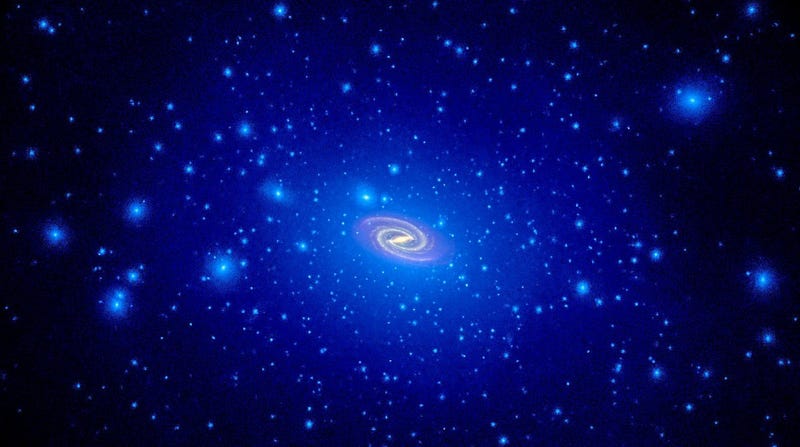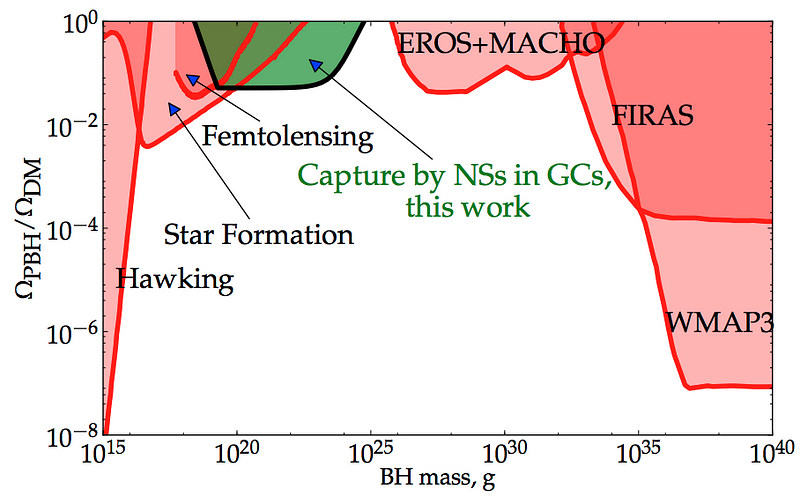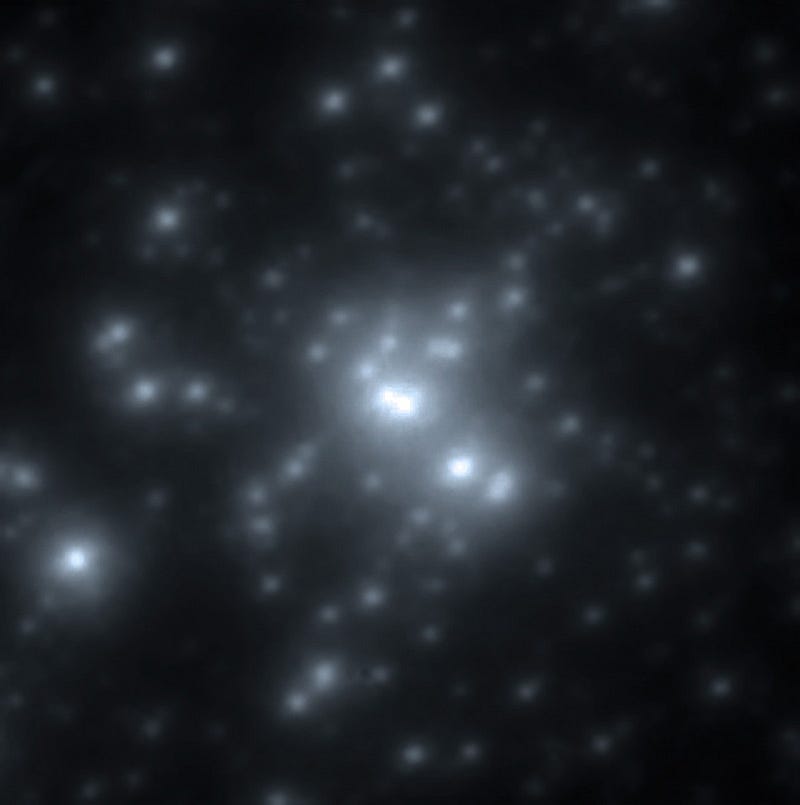Could black holes be the dark matter?

It’s an old idea made new again, but it just might fall apart.
“[The black hole] teaches us that space can be crumpled like a piece of paper into an infinitesimal dot, that time can be extinguished like a blown-out flame, and that the laws of physics that we regard as ‘sacred,’ as immutable, are anything but.” –John Wheeler
Sometimes, when you look at the Universe in a new way, it surprises you. When the LIGO collaboration announced the first detection of gravitational waves, that was serendipity and the confirmation of one of the longest-enduring unconfirmed predictions of science, but it wasn’t exactly a surprise. The surprising part was the source of those gravitational waves: two black holes of 36 and 29 solar masses apiece, far more massive than the black holes we expect from supernova and far less massive than the ones at the centers of galaxies. Perhaps this would revitalize a previously disfavored idea: that black holes had been around since very early on in the Universe, shortly after the Big Bang. Moreover, if this were the case, perhaps they made up the missing mass of the Universe: the dark matter.

The idea is pretty simple: we know the Universe started off from a hot, dense, rapidly expanding and roughly uniform state. Wherever you were located, gravitation would try to pull nearby masses towards you, while the radiation pressure from photons would try to push those masses back apart. But if on small scales, you had regions of space that were just 68% (or more) denser than average, that radiation pressure wouldn’t matter. Instead, gravitational collapse all the way to a black hole would be inevitable. If this happened at one particular mass scale in the Universe — say at 1 kilogram masses, or 10¹⁰ kilogram masses, or even 30 solar masses — you’d wind up with a large number of primordial black holes of that particular mass. They’d be strewn roughly evenly throughout the Universe, they’d form large, diffuse-but-clumpy halos around galaxies, and they’d be an excellent candidate for the dark matter.

As soon as this idea was first suggested, it was recognized that there were a number of restrictions on this possibility. Whenever a mass passes between your line-of-sight and a distant object, that mass acts like a gravitational lens, thanks to Einstein’s relativity. The effect of a transiting dense, dark object — known as microlensing — has been searched for at some length. While there is some microlensing seen due to these compact masses in our galactic halo, they’ve been more useful as far as constraining what fraction of the matter could be at the larger end of these primordial black holes. In addition, if the black holes are too small in mass, they’ll evaporate due to Hawking radiation. All told, observations of
- the lack of Hawking radiation,
- gamma-ray-burst microlensing,
- neutron star capture in globular clusters,
- traditional microlensing,
- and the cosmic infrared and microwave backgrounds,
tell us that we can’t have primordial black holes make up the majority of dark matter over a wide variety of mass ranges.

If you look at the above graph, you’ll find that ~30 solar masses — or about 6 × 10³⁴ g — is thoroughly ruled out, where only approximately 0.01% of the dark matter can exist with that mass, at most. A recent paper, however, by Alexander Kashlinsky, doubts these earlier claims about the cosmic infrared background constraints, and instead claims that a number of sources exist that could, in fact, be these primordial black holes.

Rather than using the cosmic infrared background to constrain primordial black holes, Kashlinsky uses the assumption that they make up 100% of the dark matter to explain the cosmic infrared background:
“we point out that if indeed the LIGO discovery is indicative of PBHs making up the DM, the extra […] fluctuations would lead to much greater rates of collapse at early times, which would naturally produce the observed levels of the [cosmic infrared background] fluctuations.”
The problem is, unfortunately, that there are other constraints afoot.

The fluctuations in the cosmic microwave background (above) tell us that no more than 0.1% of the total dark matter could be in primordial black holes at ~30 solar masses, where the only argument against it (by Bird et al. (2006) is that there are some uncertainties in this physics that haven’t been quantified, and perhaps those uncertainties are large enough that this bound can be evaded. It’s true: if these ill-motivated but not 100% ruled out primordial black holes exist at ~30 solar masses, and if they account for the cosmic infrared background, and if our understanding of the radiative processes of gas onto a moving black hole are wildly incorrect, then perhaps these black holes could be the dark matter after all. But another explanation is far more likely.

When we produce stars, we do so in bursts, with the most massive starbursts producing dozens of stars ranging from 50 to upwards of 250 times the mass of the Sun. All of these stars will end their lives in just a few million years in core-collapse supernovae, with the innermost core resulting in a black hole. While stars under 50 solar masses likely produce black holes around 10 solar masses or even smaller, the largest ones can create black holes 20, 30, 50 or even potentially over 100 times our Sun’s mass. That’s the leading theory for where these black holes came from, and given that the most massive star cluster known, R136, actually contains a single concentration (R136a) with at least 24 independent stars, including at least six members over 100 solar masses.

The two most massive members, R136a1 and R136a2, are ~250 and ~195 solar masses, respectively, and could easily give rise to black holes in the mass range LIGO saw, if not even greater. In addition, they’re in a binary system themselves with one another, and so a future inspiral and merger is completely within the realm of reasonable. Sure, it’s not 100% ruled out that black holes of around 30 solar masses could be the dark matter, but it’s far from the most likely explanation. In physics, as in life, the smart money is to bet on what’s already known as the most likely explanation for the novel phenomenon we just saw. While the more fanciful possibilities might spark our imagination, they’re also most likely wrong. Now you know why.
This post first appeared at Forbes, and is brought to you ad-free by our Patreon supporters. Comment on our forum, & buy our first book: Beyond The Galaxy!





